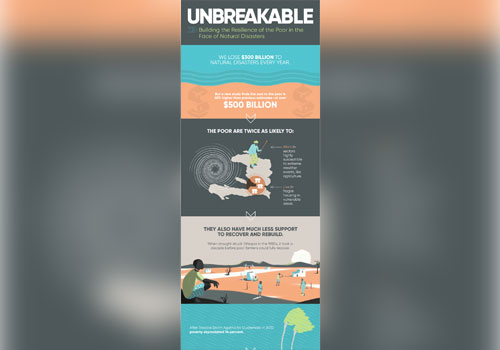Myanmar develops resilience to disasters with World Bank financing
A new project financed by the World Bank aims to bolster Myanmar’s capacity to respond to disaster risks.
The Myanmar Southeast Asia Disaster Risk Management Project (DRMP), led by the World Bank, will allocate US$116 million for financing initiatives to strengthen institutional capacity and minimise disaster risks, according to the press statement from the World Bank on June 15.
The funds will cover efforts to reduce the impact of flooding, improve the resilience of public facilities against earthquakes in Yangon, and enhance Myanmar government’s capacity to facilitate disaster response.
The press statement highlighted that disasters cost Myanmar over US$184 million annually and disproportionally hurt the poor.
Abdoulaye Seck, the World Bank country manager, told The Myanmar Times that the poor and disadvantaged are particularly vulnerable to disasters and climate change because they often live in high risk areas.
Unsafe structures, lack of legal status, assets, and access to financial resources and basic services amplify the disaster impacts on their livelihoods.
“Disaster risk management is critical to reducing poverty. When food prices peak due to disasters, and assets are lost, the poor and vulnerable feel the most pressure.
“New research by the World Bank suggests that the poor are twice as likely to work in sectors highly susceptible to extreme weather, and twice as likely to live in fragile housing in vulnerable areas.
“For example, in Myanmar, Cyclone Nargis had profound impact on the livelihoods of communities. Studies of the social impact suggest, for example, that two years after Cyclone Nargis in Myanmar, average maximum debt of labourers, fishermen, and small farmers doubled,” he said.
Mr Seck was referring to a report Breaking the Link Between Extreme Weather and Extreme Poverty published by the World Bank last November. The report argued that the impact of extreme weather on poverty is more devastating than previously understood, and emphasised the link between poverty reduction and disaster relief.
“Because natural disasters tighten poverty’s grip on communities worldwide, disaster risk reduction goes hand in hand with poverty reduction, and vice versa.
“Economic and social repercussions of Nargis will be felt for generations,” it stated.
Responding to the DRMP, Yangon Chief Minister U Phyo Min Thein said that Yangon, with its growing population, needs to upgrade the infrastructure to cope with the urbanisation.
“As Yangon is rapidly developing, the growing urban population has placed the city’s infrastructure under strain.
“Yangon faces high flood risk and is located in an earthquake-prone area. The project investments in the city’s drainage system, public facilities, and critical infrastructure will help achieve our aim of delivering high quality public infrastructure and services in the city,” he remarked.
In early June, The Myanmar Times reported that Yangon was unable to implement large-scale flood mitigation strategies due to a lack of funds, and heavy downpours during the monsoon season are causing havoc for the city’s populace.
The Yangon City Development Committee said that flood mitigation work would commence as long as they had received the loan from the World Bank.
“When we get money from the World Bank, we will start to repair the tanks and drains. But we have to think of sustainability, because the city population could reach 10 million in the future, so we have to upgrade the drains,” Yangon Mayor U Maung Maung Soe said.
Southeast Asia Disaster Risk Insurance Facility
The Myanmar Southeast Asia Disaster Risk Management Project will be co-funded by the Southeast Asia Disaster Risk Insurance Facility (SEADRIF) with a $1 million grant.
The SEADRIF is a multi-donor trust which acts as a regional catastrophe risk pool akin to a reinsurance-based disaster liquidity facility, designed to provide rapid response financing in the immediate aftermath of a disaster.
On May 5, 2017, the governments of Cambodia, Laos, Myanmar and Japan signed a Memorandum of Understanding (MoU) on the establishment of a country-led regional technical working group on disaster risk finance and insurance. This working group would lead the development of the SEADRIF.
The SEADRIF grant will assist Myanmar’s Ministry of Planning and Finance to develop disaster risk financing instruments, mainstream resilience into public investment planning, reduce the financial costs of future disasters, and improve the capacity to manage and finance the response to possible future disasters.
The DRMP is part of Southeast Asia’s regional program on disaster risk management financed by the World Bank. Currently, Myanmar is implementing the Myanmar Flood and Landslide Emergency Recovery Project (FLERP).
Mr Seck told The Myanmar Times that the FLERP supports the resilient recovery of communities impacted by the devastating floods of 2015 while the disaster risk management project adopts a medium-long term approach.
“The Flood and Landslide Emergency Project focuses on resilient recovery in select areas and sectors hit by the 2015 disasters.
“The new Myanmar Southeast Asia Disaster Risk Management project takes a medium-long-term pro-active approach, focusing on strengthening physical disaster resilience of critical infrastructure as well as enhancing financial resilience to respond to disasters.
“The project takes a strategic approach focusing on much needed risk reduction investments while supporting a broader dialogue on building resilience in Myanmar,” he explained.
According to Mr Seck, the project closes in 2023, with a grace period of six years and maturity of 38 years.
“One of the key results monitored will be, for example, the number of people benefitting from improved flood protection, and increase in area provided with improved drainage services,” he added.
Source: http://www.mmtimes.com/index.php/business/26466-myanmar-develops-resilience-to-disasters-with-world-bank-financing.html


 English
English




